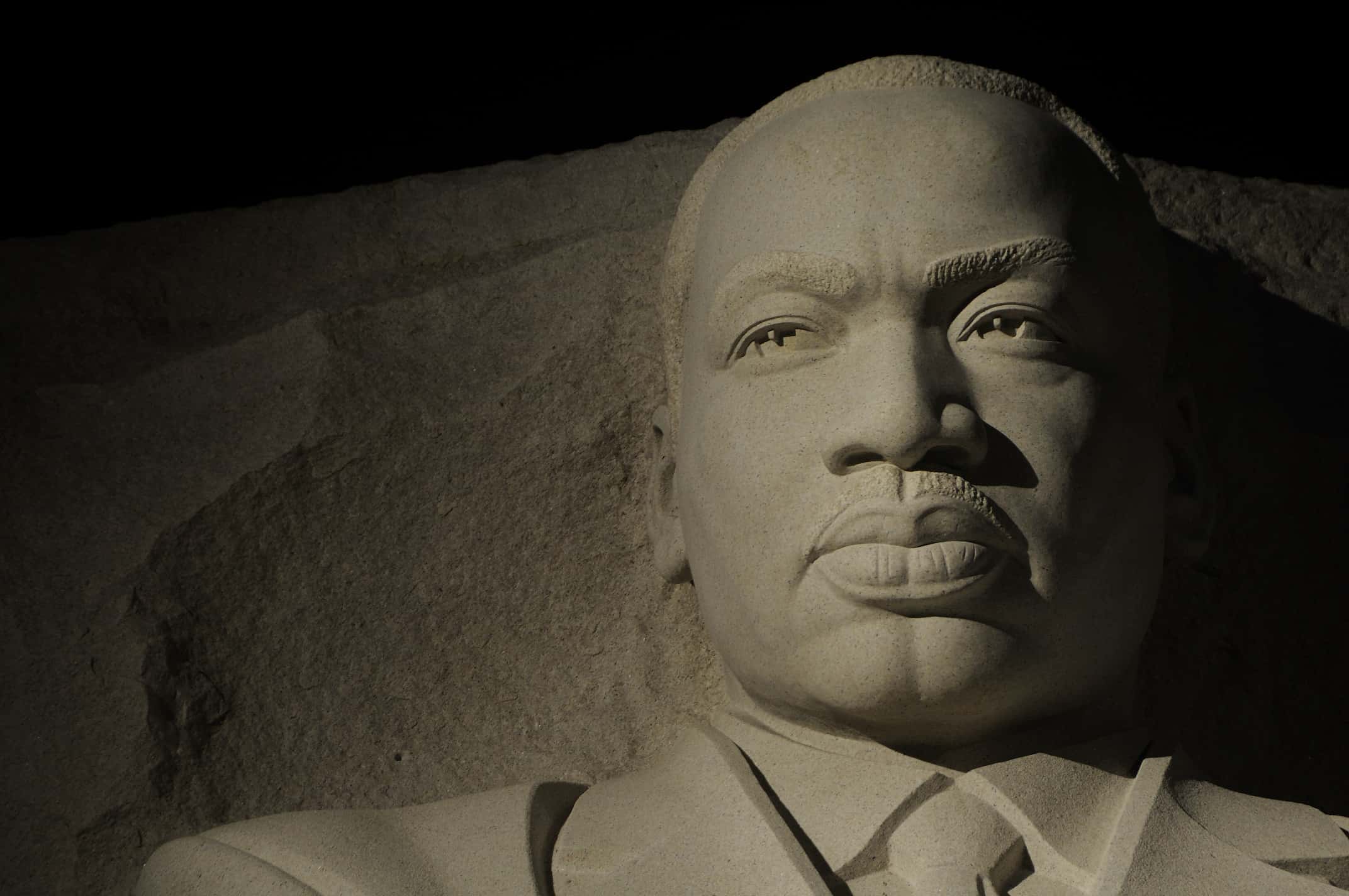Martin Luther King Jr. is the towering figure of the American civil right movement. His legacy literally spans the continent as King travelled the country to preach both non-violence and total non-cooperation. His thinking and methods became the backbone of the civil rights movement, and his philosophy is still referred to as the defining work in emancipation philosophy.
Washington, D.C.

Believe it or not, the Martin Luther King Jr. Memorial is actually only the second most important Martin Luther King Jr. memorial in the District of Columbia. The real attraction is the Lincoln Memorial, site of perhaps the most famous political speech of the past several hundred years. The so-called “I Have a Dream” speech became a galvanizing force in the civil rights movement, both before and after King’s death. It has been recreated, spoofed, dramatized and referenced countless times, but the park itself still holds power. Under the gaze of America’s first anti-slavery president, King looked out at the National Mall and delivered his historic speech to an enormous crowd during the March on Washington.
The legacy of this moment is preserved less directly in the Martin Luther King Jr. Memorial, itself, just a quick walk across the National Mall. The memorial’s centrepiece is a 10-metre statue carved into a rock dubbed the Stone of Hope, a reference to King’s famous speech. Even the address of the memorial is a reference, with 1964 Independence Ave. being chosen to honour the 1964 Civil Right Act. The memorial features numerous inscriptions from King’s speeches and writings.
Atlanta, Georgia
 https://www.flickr.com/photos/queen_of_subtle/14275868485/
https://www.flickr.com/photos/queen_of_subtle/14275868485/
Atlanta was home to fewer mass demonstrations or non-violent marches, but it is no less essential to any tour of King’s life. Atlanta puts King’s origins on display, with free half-hour tours of his childhood home and walking tours of the churches where he delivered his first sermons. Travellers to Atlanta can see a broad view of King’s entire life, walking through his place of birth, then on to his final resting place. The tomb of Martin Luther King Jr., housed at The King Center in Atlanta, lets travellers gather to reflect on his life and runs educational programs about King, his wife, and Mahatma Ghandi.
Memphis, Tennessee
 https://www.flickr.com/photos/isaacsingleton/
https://www.flickr.com/photos/isaacsingleton/
The National Civil Rights Museum wasn’t always the National Civil Rights Museum, but in fact hosted one of the grisliest days in the history of the black emancipation movement – the assassination of Martin Luther King Jr. Shot while standing on the balcony of his second-floor room at the Lorraine Motel, King died surrounded by friends and supporters. Though the motel stayed open for some time following his death, King’s room and that adjacent to it kept empty out of respect, the building was eventually converted into the national museum dedicated to chronicling the rise of King’s pacifist, anti-racist ideology.
Today, the museum preserves the assassination spot with eerie fidelity, just a single white and red wreath marking the otherwise period-accurate aesthetic. Within the converted motel, numerous educational exhibits bring the civil rights movement into sharper focus.


